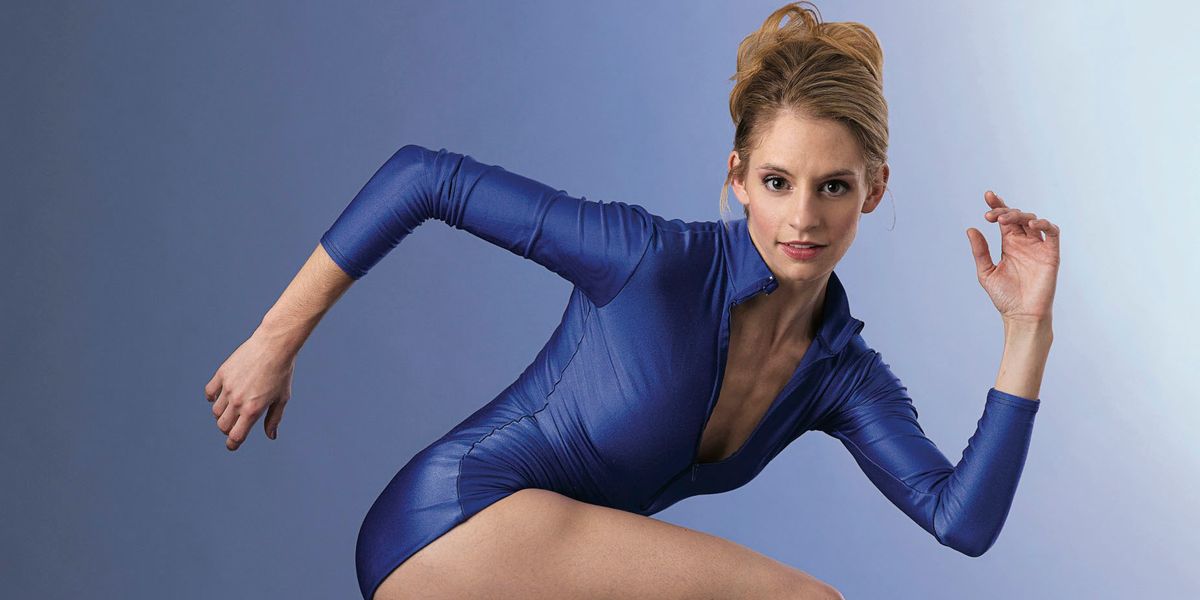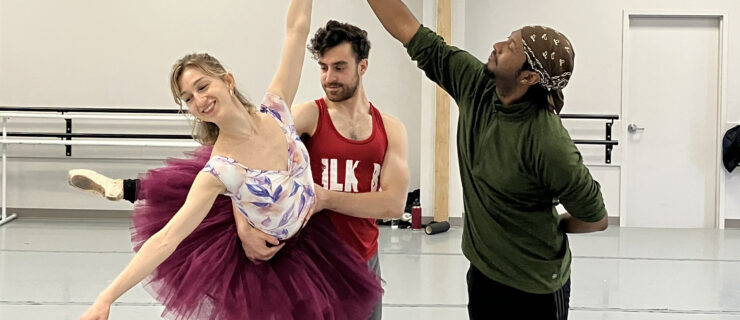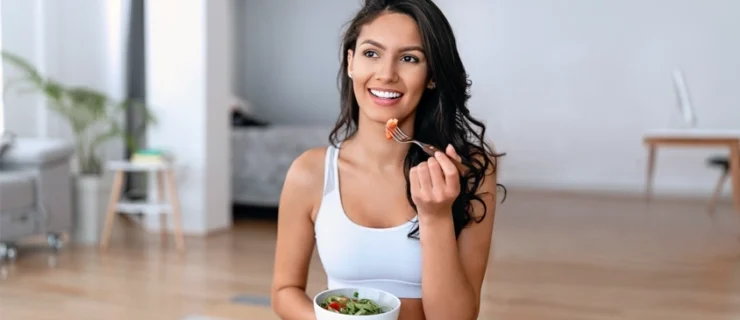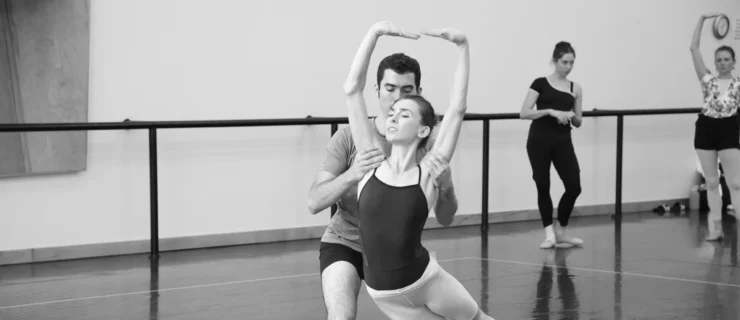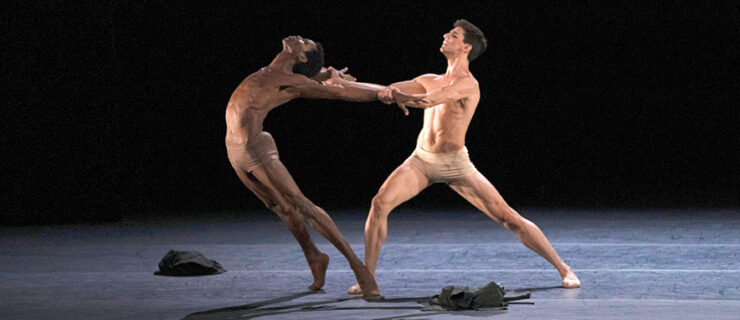A Daring Move: Melissa Hough is Reinventing Herself at Houston Ballet
Houston knows a thing or two about storms. But when the hurricane that is Melissa Hough blazed through Jirí Kylián’s hyper-dynamic Forgotten Land at the opening of Houston Ballet’s 2010 season, it was as if a flash of lightning had struck the Wortham Center stage. Hough’s fierce, full-throttle attack punctuated Kylián’s movement with speed and precision. It was Houston audiences’ first glimpse of her talents. Yet in her typical frank, matter-of-fact manner, Hough took her debut in stride: “With Kylián,” she says, “you just need to keep up.”
Hough’s dancing reflects her personality: dynamic and surprising. Drawn to challenges, the 25-year-old is not the type of dancer who’s easily intimidated. Her fearless intensity can be traced back to her time in the competition world. Last summer, Hough proved she has the confidence to steer her career by making tough—if surprising—choices when she left her principal position at Boston Ballet to become Houston Ballet’s top soloist to watch.
A Baltimore, Maryland, native, Hough began dancing at age 3 in combo ballet-tap-jazz classes. Her parents are both retired Army musicians, each having served over 25 years in the U.S. Army Field Band. Her sister tried dancing but ultimately gravitated toward gymnastics and then competitive cheerleading. Hough, however, found her stride on the competition circuit with Dance Explosion, a studio in Glen Burnie, MD, where she trained from ages 7 to 17. But as much as she loved jazz and hip-hop, Hough always wanted to be a ballet dancer. At 13, she also enrolled at the Kirov Academy in Washington, DC. “It was difficult, but I managed to cobble a schedule together. I did most of my ballet at Kirov and the rest at Dance Explosion,” she says. “Luckily the studios weren’t that far away.”
Straddling both worlds gave Hough an edge, but also held her back. “I was the only person at Kirov who could do more than two pirouettes, and I felt more advanced when it came to attacking things,” she says. “But the school didn’t value that. I needed to work more on movement quality.” In the Kirov’s annual concert, Hough stood out performing one of her competition jazz solos. “It was great to be noticed in that way, but I wasn’t taken seriously and the teachers often discouraged me from pursuing a ballet career.”
Nonetheless, Hough was hired as an apprentice at BalletMet Columbus, where she danced for a year before heading to Boston Ballet II. Boston Ballet was in transition at the time, and Hough had the advantage of a new director’s eyes. “Mikko Nissinen had just become artistic director, so it was an exciting time,” recalls Hough. “There were a lot of people to look up to and learn from.” Her career progressed quickly: She joined the corps at 19, became a soloist at 22 and a principal at 24. Yet though she was regularly dancing Jirí Kylián, Lucinda Childs and William Forsythe, she was being passed over for classical parts. In 2005, she saw a chance to prove her classical skills by entering the Helsinki International Ballet Competition. She performed Aurora’s challenging Act I variation from Sleeping Beauty, winning the bronze medal. It wasn’t long before she was performing Aurora in Boston. “Dancing Aurora,” says Hough, “was the first time I truly believed I was a ballerina.”
Even though she began getting more classical roles, Hough still felt frustrated that she couldn’t change the company’s perception of her. Her last year at Boston Ballet was fraught with difficulties, from a failed romance to her first serious injury—labral tears in both hips. She also underwent exploratory stomach surgery for an undiagnosed ailment. “Now the pain is gone,” she says. “My stomach was trying to tell me something.” Even as she declares the decision was the right one, it’s painful to talk about. “It’s like breaking up with a boyfriend, which I did as well. You are sad, angry, regretful. You remember the good times, but come to understand that something was not working,” says Hough. “I felt jaded, unable to function and angry much of the time. It was a difficult choice. But I wasn’t dancing my best. I needed to accept that and move on.”
Hough had met Houston Ballet artistic director Stanton Welch when he was an associate artistic director at BalletMet and she’d danced in his production of Don Quixote. “She left an impression,” remembers Welch. They reconnected when both Houston Ballet and Boston Ballet performed at the Kennedy Center’s Ballet Across America festival in 2008. Intrigued by the prospect of dancing for Welch—and in the same company as her new boyfriend, demi-soloist James Gotesky—Hough sent Welch a DVD. “I was most surprised at her Sleeping Beauty, which was lovely,” says Welch. A conversation ensued, leading to a job offer.
Welch hasn’t been disappointed. “Melissa is brave, and fully trusts the choreographic process,” he says. “There’s no resistance or fear. She’s smart, detailed in her thinking, stylistically flexible.”
Immediately after the opening weekend, Hough took center stage in Balanchine’s Jewels, dancing “Diamonds” and “Rubies” with blazing gusto. She had earned rave reviews in Boston for Jewels, and was happy to have at least one familiar piece on her plate. “If it weren’t for Jewels, those first few months would have really been hard,” she says. “Balanchine was my saving grace.”
Hough has no regrets about taking a lower rank, and finds she actually performs more often now. “Casting is not so much based on rank here,” she explains. She went from a relatively light rehearsal schedule to one where she’s in everything. “It was a bit of a shock—every dancer here knows 800 parts,” she says. Already, she has learned Welch’s Tu Tu, The Core, Velocity and his full length Marie, as well as three roles—including Aurora—in Ben Stevenson’s Sleeping Beauty.
This May, she returns to familiar territory in Jorma Elo’s new work for Houston Ballet. An original cast member in his signature Brake the Eyes at Boston Ballet, Elo’s highly idiosyncratic choreography—a subtle squiggle of the wrist, a figure eight drawn with the left hip, a birdlike twitch of the head—comes naturally to Hough. “My training in hip-hop and many styles of jazz helps,” says Hough (who still pops into jazz, lyrical and hip-hop classes when a convention like New York City Dance Alliance is in town). “There are so many options with his choreography. I can push the music, channeling the frenetic energy. There’s so much freedom, almost too much.”
Even though the repertoire is familiar, transferring to Houston Ballet has given Hough a chance to reinvent herself. “There’s a different attitude toward me in this company,” she says. “This is amazing, not working with a bias. I am breaking my own boundaries. Because to them, I am a ballerina.”
Nancy Wozny writes about the arts and health from Houston, TX.
